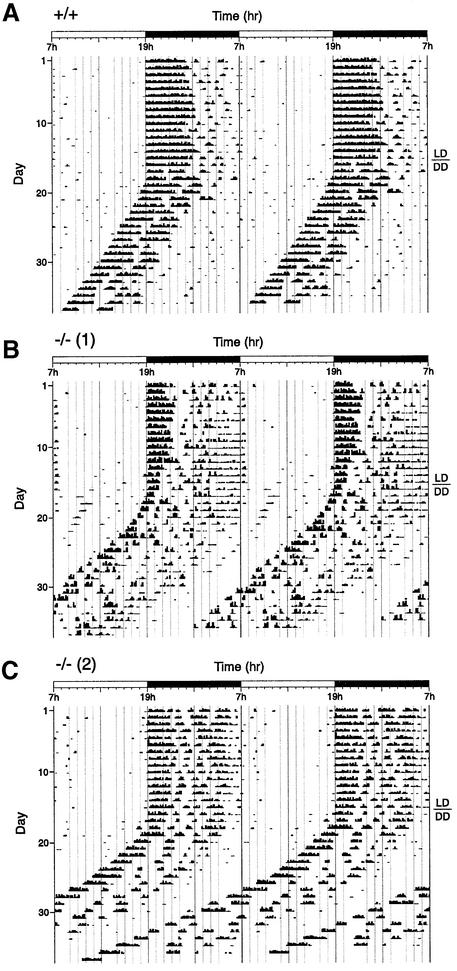Fig. 2. Per1 knock-out mice display a short free-running period of locomotor activity rhythms. Representative actograms for one wild-type (A) and two knock-out (B and C) animals. Animals were housed independently in cages with running wheels, and they were entrained on a light–dark cycle with 12 h of light and 12 h of darkness (LD). After 15 days, they were put in constant darkness (DD). Black bars represent the number of turns in 10 min. The plots were duplicated for clarity. Measurement of the free-running period was based on the onset of activity in DD (see Table I). In some mutant animals, the free-running period became even shorter after an extended time in DD [example in (C)].

An official website of the United States government
Here's how you know
Official websites use .gov
A
.gov website belongs to an official
government organization in the United States.
Secure .gov websites use HTTPS
A lock (
) or https:// means you've safely
connected to the .gov website. Share sensitive
information only on official, secure websites.
